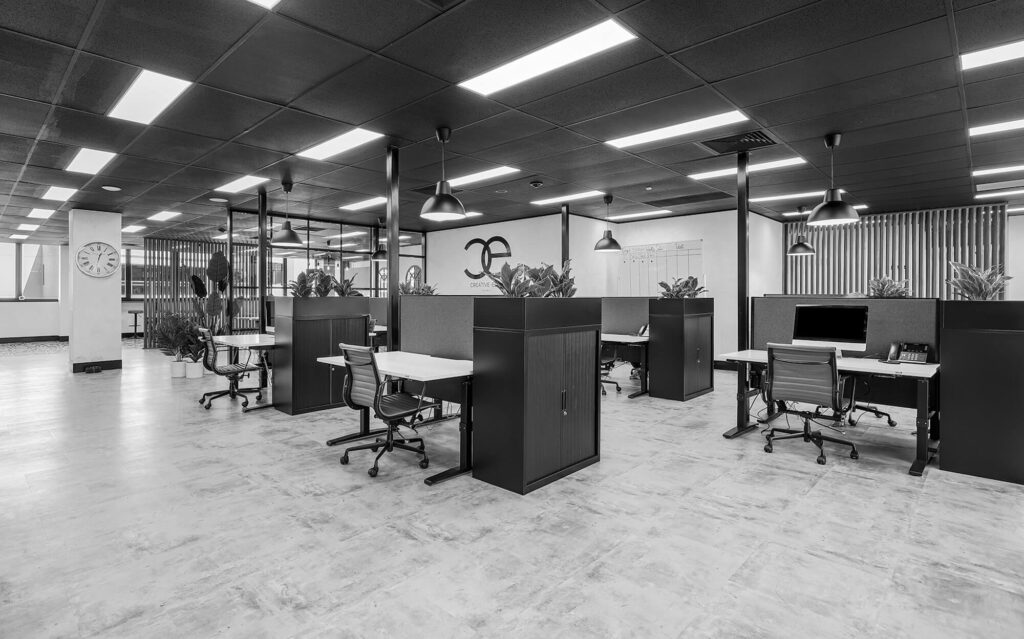A well-designed warehouse fitout is a critical investment for businesses aiming to optimise efficiency, increase storage capacity, and improve overall operational workflow. The right industrial fitout not only enhances productivity but also maximises return on investment (ROI) by reducing wasted space, improving safety, and streamlining logistics.
With increasing competition and the growing demand for efficient supply chain management, businesses must focus on warehouse fitouts that provide tangible benefits. This guide explores how industrial fitouts can maximise ROI, key strategies for efficient design, and best practices for warehouse optimisation.
Understanding ROI in Warehouse Fitouts
Return on investment (ROI) in industrial fitouts is measured by improvements in productivity, operational efficiency, and cost savings achieved through better space utilisation and streamlined processes. A well-planned fitout provides long-term financial benefits, reducing operational costs and minimising downtime.
Key factors that influence ROI include:
- Optimised Storage Solutions: Maximising vertical and horizontal space to increase storage capacity.
- Enhanced Workflow Efficiency: Reducing movement inefficiencies and improving material handling processes.
- Employee Productivity: Creating a safe and ergonomic environment that enhances worker efficiency.
- Sustainability and Energy Efficiency: Implementing eco-friendly solutions to cut operational costs.
- Technology Integration: Incorporating automation and smart systems for better inventory management.
Key Strategies for Maximising ROI with Industrial Fitouts
1. Efficient Space Planning and Layout Optimisation
Space planning is a fundamental aspect of warehouse fitouts, ensuring every square metre is utilised effectively. Consider the following approaches:
- Vertical Storage Solutions: Use tall shelving systems and mezzanine floors to maximise vertical space.
- Optimised Aisle Widths: Balance aisle width with storage density for efficient material handling.
- Zoning Strategies: Designate areas for picking, packing, storage, and shipping to streamline workflow.
- Future-Proofing: Plan for scalability to accommodate future business growth and changing needs.
2. Investing in High-Density Storage Systems
Maximising warehouse storage capacity is crucial for improving ROI. High-density storage solutions help businesses store more inventory within the same footprint, reducing the need for expensive expansions.
- Pallet Racking Systems: Selective, drive-in, push-back, and cantilever racking for efficient storage.
- Automated Storage and Retrieval Systems (AS/RS): Technology-driven solutions for high-speed inventory management.
- Mezzanine Floors: Adding extra levels of storage space without increasing the warehouse footprint.
3. Enhancing Workflow and Productivity
A warehouse fitout should be designed to minimise inefficiencies and improve employee productivity.
- Ergonomic Workstations: Reduce strain on workers by incorporating height-adjustable benches and anti-fatigue flooring.
- Optimised Picking and Packing Areas: Minimise walking distances and use conveyor systems to speed up order fulfilment.
- Efficient Material Handling Equipment: Invest in forklifts, automated guided vehicles (AGVs), and conveyor belts to reduce manual labour.
4. Implementing Smart Warehouse Technology
Technology-driven fitouts can dramatically enhance operational efficiency and reduce costs.
- Warehouse Management Systems (WMS): Improve inventory tracking, order processing, and reporting.
- IoT-Enabled Sensors: Monitor real-time inventory levels and warehouse conditions.
- Automated Inventory Handling: Robotics and AI-driven sorting systems for faster processing.
- Energy-Efficient LED Lighting: Reduce electricity costs and enhance visibility in storage areas.
5. Improving Safety and Compliance
A well-designed fitout must prioritise workplace safety and compliance with industry regulations. Ensuring a safe environment not only protects employees but also reduces liability risks and improves overall efficiency.
- Clear Signage and Markings: Help navigate warehouse areas and prevent accidents.
- Fire Safety and Ventilation: Install fire suppression systems and ensure proper air circulation.
- Anti-Slip Flooring and Barriers: Prevent workplace injuries and damage to stored goods.
- Regular Safety Audits: Ensure compliance with Work Health and Safety (WHS) regulations.
6. Sustainability and Energy Efficiency
Sustainable warehouse fitouts not only reduce environmental impact but also lower operational costs.
- Solar Panels and Energy-Efficient HVAC: Reduce reliance on grid power and lower energy bills.
- Sustainable Building Materials: Use recycled and locally sourced materials for fitout construction.
- Waste Reduction Strategies: Implement recycling stations and optimise packaging processes.
- Smart Lighting Systems: Motion-activated LEDs reduce unnecessary energy consumption.
Cost-Effective Fitout Solutions for Warehouses
Businesses looking to improve warehouse efficiency without overspending can adopt cost-effective fitout solutions such as:
- Refurbishing Existing Racking Systems: Extend the lifespan of storage infrastructure.
- Leasing Fitout Equipment: Reduce upfront capital expenses.
- Modular and Flexible Designs: Invest in scalable solutions that adapt to changing business needs.
- Outsourcing Fitout Services: Partner with experienced fitout providers to ensure cost-effective project execution.
Steps to Implementing a Successful Industrial Fitout
- Conduct a Needs Assessment: Identify inefficiencies and determine specific requirements.
- Set a Realistic Budget: Allocate resources effectively while ensuring quality solutions.
- Work with Professional Fitout Specialists: Engage experts who understand warehouse best practices.
- Plan for Minimal Disruption: Schedule fitout projects to avoid major operational downtime.
- Monitor and Evaluate Performance: Track improvements in efficiency and adjust as necessary.
Conclusion
A strategic warehouse fitout is an investment that delivers long-term value by improving storage efficiency, workflow, and overall productivity. By focusing on optimised layouts, smart storage solutions, advanced technology, and sustainability, businesses can achieve significant cost savings and operational enhancements.
Industry 7 specialises in tailored industrial fitouts that help businesses maximise ROI while meeting their unique operational needs. Contact us today to discuss how we can optimise your warehouse space for maximum efficiency and profitability.


